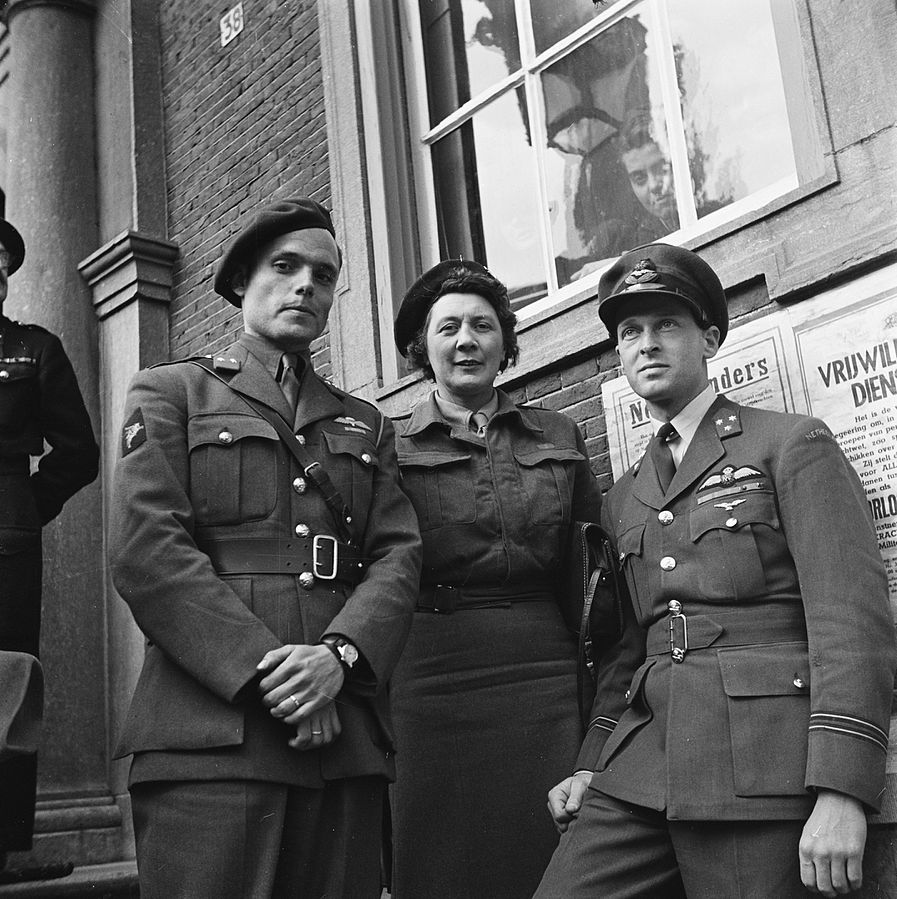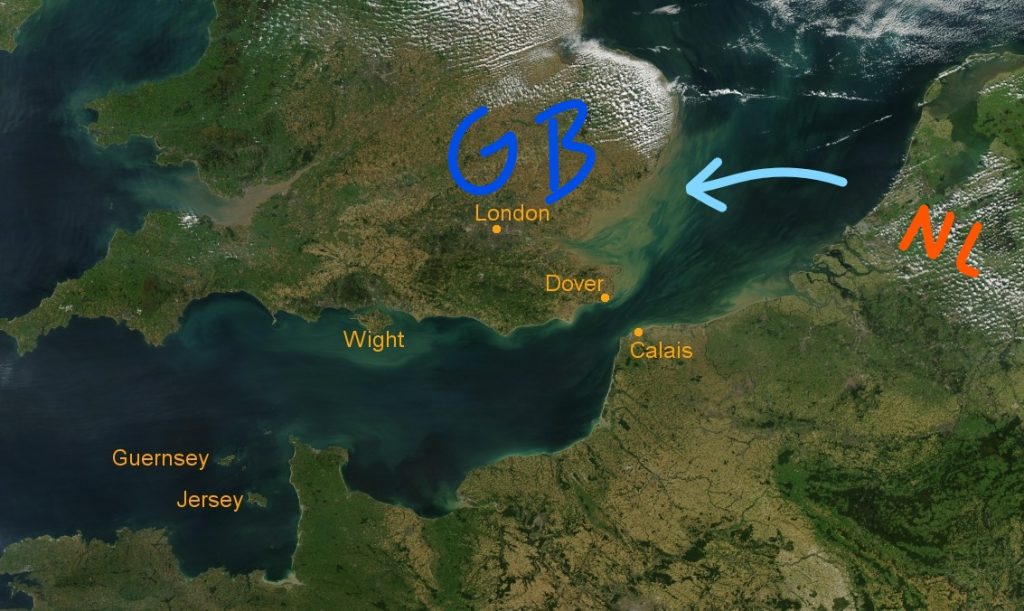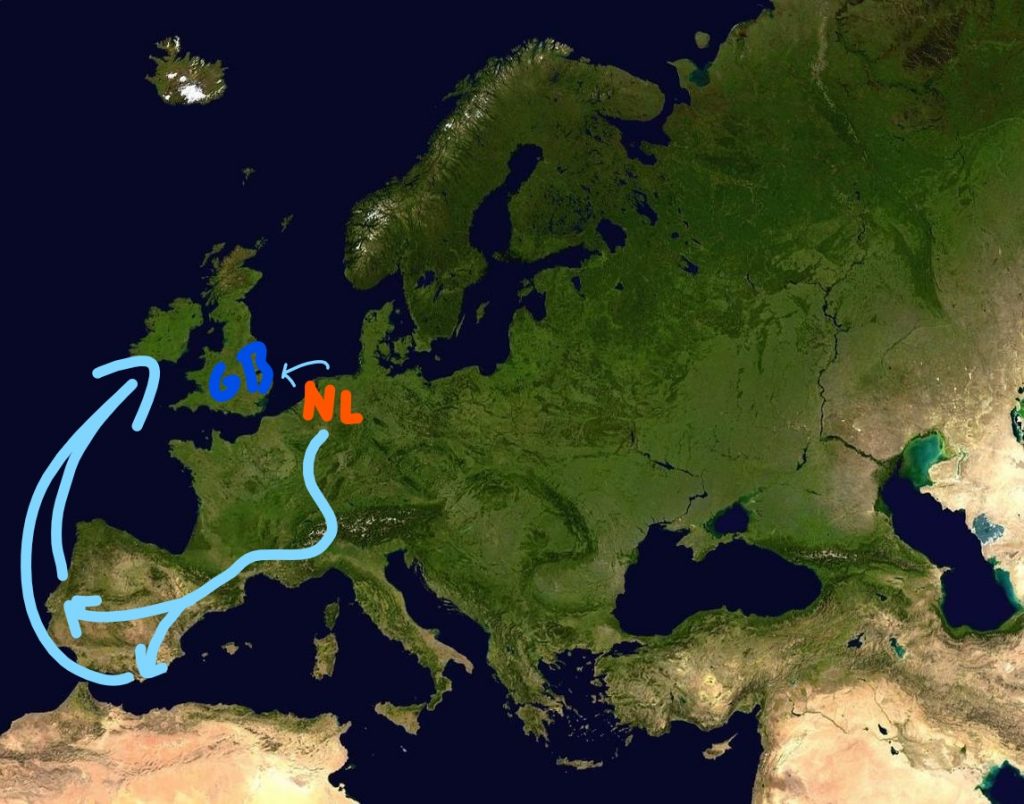The Dutch Resistance in World War II – Part 4: De Engelandvaarders Posted by Sten on Jun 7, 2019 in Culture, Dutch Language, Dutch Vocabulary
In the aftermath of the dodenherdenking and the celebration of the bevrijding of the Netherlands from the German occupation during World War II on May 4 and 5 and the fact that 2019 marks 80 years since the start of World War II in 1939, I am writing a series on how the Dutch got sucked into the war, and how they fought and resisted the Nazi occupation. In this fourth part, we continue to have a look at the Dutch resistance, and look at the brave Engelandvaarders.
Other posts in the series:
Naar Engeland varen
As we discussed last week, many people did not want to put up with the Nazi rule, and they brought verzet (resistance). What exactly that entails, you can read in part 3 of this series. Some people, however, did not want to “break the system from within” and stay in the Netherlands, but aan de bezetting ontsnappen (escape the occupation) and fight the oorlog (war) from afar. Preferably from Engeland (England). And these people were called Engelandvaarders (“England sailors”). Why?
Obviously, because they left for England. And they (initially) did so via the Noordzee. Simple as that. Or not?
Well, there is a little story behind it.
It’s July 5, 1940. Three friends escape from the occupied Netherlands with a little boat at the strand (beach) of Noordwijk. They reached England and became the first to be called Engelandvaarders. Many would follow them. Not all would survive.
In total, 1706 people, of which 48 women, made it to England. Upon arrival, they were thoroughly checked by the British Security Service MI5 to make sure they were no spies for the vijand (enemy). After this inspection, the Dutch had their own lengthy inspection. But it was worth it: All Engelandvaarders were personally welcomed by Koningin Wilhelmina (Queen Wilhelmina), who supported the Dutch from London. She also initiated Radio Oranje, the radio program used to communicate with the Dutch during the war. More on that in the previous post. For the Koningin, the Engelandvaarders were an unaltered source of news from her country, and so she really valued what they had to say.
Vechten vanuit Engeland
So what came next for the Engelandvaarders? Some only left to escape the war, and to continue living peaceful lives. Though most made the dangerous trip to actively fight the Nazis. Some joined the British luchtmacht (air force), while others became mariniers (navy soldiers). Though most joined the remains of the Dutch army in England, the so-called Prinses Irene Brigade (Princess Irene Brigade).
Een gevaarlijke reis
But how to reach the Engelsen (English)? There were two ways:
- Via the Noordzee (North Sea), in small boats. Many soldaten (soldiers) that served in the Dutch army fled this way after capitulation. About 4,000 soldaten made it in May 1940 to England. While in the beginning, this was still possible, it became particularly difficult and dangerous to get to England across the Noordzee after the Nazis built the Atlantikwall (Atlantic Wall), a line of fortifications from Southern France all the way up to the northern edge of Norway.
- Via Belgium and France to Switzerland, through Vichy France, to Spain and to English-held Gibraltar or Portugal, and from there either by ship or plane to England. A much longer route with its own dangers, but nonetheless used by Engelandvaarders and many others that wanted to ontsnappen aan the Nazis.
While the name suggests that the Dutch would only go to Engeland, they would also try to get to other allied territory to escape the Germans.
All of these options were gevaarlijk (dangerous). If the natural gevaren (dangers) would not kill you, the Axis forces would. It was absolutely onontbeerlijk (indispensable) to get help from local authorities, people and verzetsstrijders (resistance fighters).
Soldaat van Oranje
In 2010, the story of the Engelandvaarders was shown in a new, innovative theater at Vliegkamp Valkenburg, close to Katwijk aan Zee. This air base has important historical significance, as the Dutch fought the Nazis valiantly there during the invasion of May 1940. The musical Soldaat van Oranje (Soldier of Orange) depicts the story of Erik Hazelhoff, who was a real Engelandvaarder and wrote a book about it. It became an instant hit, and quickly became the langstlopende theatervoorstelling van Nederland (the longest-running play of the Netherlands). And it kept going – even after 8 years, the voorstelling is still going and it is still selling out! The main role of Erik Hazelhoff has so far been played by 18 different actors. I saw it myself, and I can definitely recommend it.
This is the end of the series on the Dutch resistance in World War II. If you have any comments or questions, let me know in the comments below.

Build vocabulary, practice pronunciation, and more with Transparent Language Online. Available anytime, anywhere, on any device.






